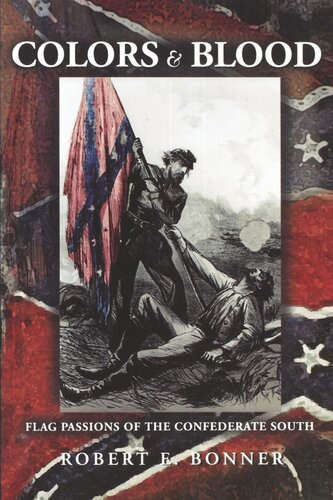

Most ebook files are in PDF format, so you can easily read them using various software such as Foxit Reader or directly on the Google Chrome browser.
Some ebook files are released by publishers in other formats such as .awz, .mobi, .epub, .fb2, etc. You may need to install specific software to read these formats on mobile/PC, such as Calibre.
Please read the tutorial at this link: https://ebookbell.com/faq
We offer FREE conversion to the popular formats you request; however, this may take some time. Therefore, right after payment, please email us, and we will try to provide the service as quickly as possible.
For some exceptional file formats or broken links (if any), please refrain from opening any disputes. Instead, email us first, and we will try to assist within a maximum of 6 hours.
EbookBell Team

4.1
20 reviewsAs rancorous debates over Confederate symbols continue, Robert Bonner explores how the rebel flag gained its enormous power to inspire and repel. In the process, he shows how the Confederacy sustained itself for as long as it did by cultivating the allegiances of countless ordinary citizens. Bonner also comments more broadly on flag passions--those intense emotional reactions to waving pieces of cloth that inflame patriots to kill and die.
Colors and Blood depicts a pervasive flag culture that set the emotional tone of the Civil War in the Union as well as the Confederacy. Northerners and southerners alike devoted incredible energy to flags, but the Confederate project was unique in creating a set of national symbols from scratch. In describing the activities of white southerners who designed, sewed, celebrated, sang about, and bled for their new country's most visible symbols, the book charts the emergence of Confederate nationalism. Theatrical flag performances that cast secession in a melodramatic mode both amplified and contained patriotic emotions, contributing to a flag-centered popular patriotism that motivated true believers to defy and sacrifice. This wartime flag culture nourished Confederate nationalism for four years, but flags' martial associations ultimately eclipsed their expression of political independence. After 1865, conquered banners evoked valor and heroism while obscuring the ideology of a slaveholders' rebellion, and white southerners recast the totems of Confederate nationalism as relics of the Lost Cause.
At the heart of this story is the tremendous capacity of bloodshed to infuse symbols with emotional power. Confederate flag culture, black southerners' charged relationship to the Stars and Stripes, contemporary efforts to banish the Southern Cross, and arguments over burning the Star Spangled Banner have this in common: all demonstrate Americans' passionate relationship with symbols that have been imaginatively soaked in blood.